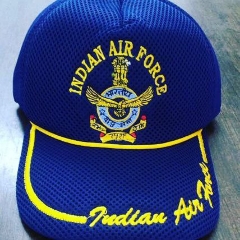Question 1 :
Let X, Y and Z be the points which divide the line segment joining A $\left(– 2, 2\right)$ and B $\left(2, 8\right)$ into four equal parts. Find the coordinates of X.
Question 2 :
Name the type of quadrilateral formed, if any, by the following points (-3,5) , (3,1) , (0,3) , (-1,-4).
Question 3 :
You have studied the median of a triangle divides it into two triangles of equal areas. Is the statement true for ∆ ABC whose vertices are A $\left(4, – 6\right)$, B $\left(3, –2\right)$ and C $\left(5, 2\right)$?
Question 4 :
Find the area of a rhombus if its vertices are $\left(3, 0\right)$, $\left(4, 5\right)$, $\left(– 1, 4\right)$ and $\left(– 2, – 1\right)$ taken in order.
Question 5 :
Find the point on the x-axis which is equidistant from $\left(2, –5\right)$ and $\left(–2, 9\right)$.
Question 6 :
The area of a triangle with vertices (a, b + c), (b, c + a) and (c, a + b) is :
Question 7 :
The vertices of a ∆ABC are A $\left(4, 6\right)$, B $\left(1, 5\right)$ and C $\left(7, 2\right)$. A line is drawn to intersect sides AB and AC at D and E respectively, such that $\frac{AD}{AB}$=$\frac{AE}{AC}$=$\frac{1}{4}$. Calculate the area of triangle ADE.
Question 10 :
Find the area of a triangle whose vertices are $\left(1, –1\right)$, $\left(– 4, 6\right)$ and $\left(–3, –5\right)$.
Question 11 :
Find the area of the triangle formed by the points P $\left(–1.5, 3\right)$, Q $\left(6, –2\right)$ and R $\left(–3, 4\right)$.
Question 12 :
Find the area of the triangle ABC with A (1, –4) and the mid-points of sides through A being (2, – 1) and (0, – 1).
Question 13 :
A line intersects the y-axis and x-axis at the points P and Q, respectively. If (2, –5) is the mid-point of PQ, then the coordinates of P and Q are, respectively :
Question 14 :
Name the type of triangle formed by the points $\left(5, – 2\right)$, $\left(6, 4\right)$ and $\left(7, – 2\right)$.
Question 15 :
The points (0, 5), (0, –9) and (3, 6) are collinear. State true or false.
Question 16 :
What type of a quadrilateral do the points A (2, –2), B (7, 3), C (11, –1) and D (6, –6) taken in that order, form?
Question 17 :
If Q $\left(0, 1\right)$ is equidistant from P $\left(5, –3\right)$ and R $\left(4, 6\right)$. Find the distance PR.
Question 18 :
Check whether (5, -2), (6, 4) and (7, -2) are the vertices of an isosceless triangle.
Question 19 :
Find the area of the triangle formed by joining the mid-points of the sides of the triangle whose vertices are $\left(0, –1\right)$ ,$\left(2, 1\right)$ and $\left(0, 3\right)$.
Question 20 :
Find the coordinates of a point A, where AB is the diameter of a circle whose centre is $\left(2, – 3\right)$ and B is $\left(1, 4\right)$.
Question 21 :
The points A (2, 9), B (a, 5) and C (5, 5) are the vertices of a triangle ABC right angled at B. Find the values of a and hence the area of ∆ABC.
Question 22 :
The point P (–2, 4) lies on a circle of radius 6 and centre C (3, 5). State true or false.
Question 23 :
If the mid-point of the line segment joining the points A (3, 4) and B (k, 6) is P (x, y) and x + y – 10 = 0, find the value of k.
Question 24 :
If Q $\left(0, 1\right)$ is equidistant from P $\left(5, –3\right)$ and R $\left(x, 6\right)$, find the values of x.
Question 25 :
The distance between the points A (0, 6) and B (0, –2) is :
Question 26 :
Find the centre of a circle passing through the points $\left(6, – 6\right)$, $\left(3, – 7\right)$ and $\left(3, 3\right)$.
Question 27 :
If P (9a – 2, –b) divides line segment joining A (3a + 1, –3) and B (8a, 5) in the ratio 3 : 1, find the value of b.
Question 28 :
If the point A (2, – 4) is equidistant from P (3, 8) and Q (–10, y), find distance PQ.
Question 29 :
The vertices of a ∆ABC are A $\left(4, 6\right)$, B$\left(1, 5\right)$ and C $\left(7, 2\right)$. A line is drawn to intersect sides AB and AC at D and E respectively, such that $\frac{AD}{AB}$=$\frac{AE}{AC}$=$\frac{1}{4}$. Calculate the area of triangle ABC.
Question 30 :
Point P (0, 2) is the point of intersection of y–axis and perpendicular bisector of line segment joining the points A (–1, 1) and B (3, 3). State true or false.
Question 31 :
Find the ratio in which the y-axis divides the line segment joining the points $\left(5, – 6\right)$ and $\left(–1, – 4\right)$.
Question 32 :
Find the area of the triangle whose vertices are $\left(0, –1\right)$, $\left(2, 1\right)$ and $\left(0, 3\right)$.
Question 33 :
<img style='object-fit:contain' src='https://teachmint.storage.googleapis.com/question_assets/cbse_ncert/61b19bd8273b230584979a2b.png ' />
The Class X students of a secondary school in Krishinagar have been allotted a rectangular plot of land for their gardening activity. Sapling of Gulmohar are planted on the boundary at a distance of 1m from each other. There is a triangular grassy lawn in the plot as shown in the above image. The students are to sow seeds of flowering plants on the remaining area of the plot.What will be your observation regarding the areas of the triangles when A and C are taken as origins, respectively ?
Question 34 :
Find the coordinates of the points of trisection of the line segment joining $\left(4, -1\right)$ and $\left(-2, -3\right)$.
Question 35 :
What are the coordinates of the point P which divides the line segment joining the points A ($x_1, y_1$) and B ($x_2, y_2$) internally in the ratio $m_1 : m_2$ ?
Question 36 :
Point P (– 4, 2) lies on the line segment joining the points A (– 4, 6) and B (– 4, – 6). State true or false.
Question 37 :
What is the relation between x and y such that the point $\left(x , y\right)$ is equidistant from the points $\left(7, 1\right)$ and $\left(3, 5\right)$?
Question 38 :
The distance of a point from the y-axis is called its x-coordinate, or abscissa. TRUE or FALSE ?
Question 39 :
If (– 4, 3) and (4, 3) are two vertices of an equilateral triangle, find the coordinates of the third vertex, given that the origin lies in the interior of the triangle.
Question 40 :
The points A (–1, –2), B (4, 3), C (2, 5) and D (–3, 0) in that order form a rectangle. State true or false.

























